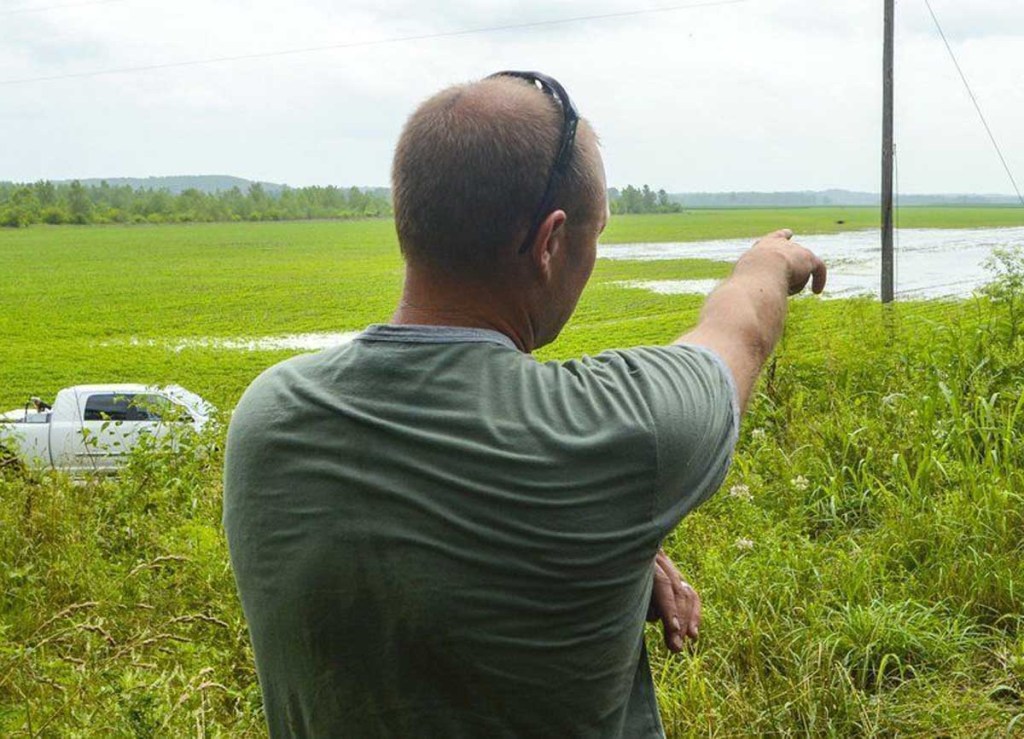Midwest rains hurting crops, but not necessarily pocketbooks
Published 4:00 pm Tuesday, June 23, 2015

- Surveying the land: Vigo County farmer Chuck Curran points to areas where his crops are being affected the most by flooding.
Chuck Curran stood at the edge of his bean fields in western Indiana Monday afternoon, looking at the water flooding the crops.
“There’s a lot more beans that are under water than what you actually see right now,” he said.
Trending
June has been a soggy month in many places across the Midwest, and with every day of rain, farmers like Curran stand a better chance of losing a significant portion of their crops.
“We’re not going to be a complete loss,” Curran said. “We’re going to be bad, but it’s not going to be a complete loss.”
Curran’s assessment echoes that of agriculture officials in states across the Midwest, who say it’s too early to draw immediate conclusions about how prices at the grocery store might be affected by waterlogged crops.
“We’re not going to have a bumper crop, but we’re not going to be looking at a total failure,” said Mike Schulte, executive director of the Oklahoma Wheat Commission. “Last year we had the worst crop since 1957, and this year we had received some timely rains at the time the crops were planted. While we’ve received a lot of rain in certain areas, we haven’t lost crop yield because of it.”
In Indiana, where flood warnings in 17 counties were expected to remain in effect until the end of the week, rainfall totals for June were already 5 to 8 inches above normal in the northern and southwestern parts of the state, according to the National Weather Service. But, depending on geography, crop yields may not be drastically affected.
“I know we’ve had a lot of rain lately, but a lot of our fields sit up on higher ground,” said Abby Sweet, an extension educator at the Purdue Extension in Vigo County. “Really, there’s a bunch of different factors that come into play when you look at what can affect crop yields.”
Trending
And, even if a crop is damaged or destroyed, in most cases the pricing needle won’t move much, if at all, according to Ron Smith, a grain merchandiser at Harvest Land Co-Op in Richmond, Indiana.
Smith, who regularly views fields in the eastern part of Indiana, said one farm near Geneva, Indiana, had received 20 inches of rain in June as of Tuesday, which meant its crop is probably not salvageable. “Those guys are hurting,” he said. “That’s probably the area that’s received the most damage.”
But, he added, although Indiana’s crop has taken a beating in the last week, it’s still too early to tell how prices might be affected. Corn was trading at $3.62 per bushel on the Chicago Board of Trade late Tuesday afternoon.
“It’s not like we’re going to put a dollar or two on corn or soybeans,” Smith said. “If you compare values to where we were four or five years ago, the crop is still really undervalued. I don’t expect to see any huge movements in terms of prices at the grocery store.”






